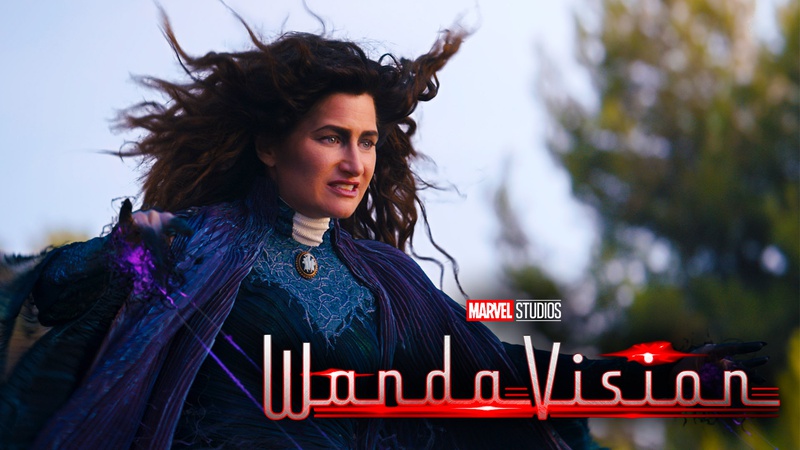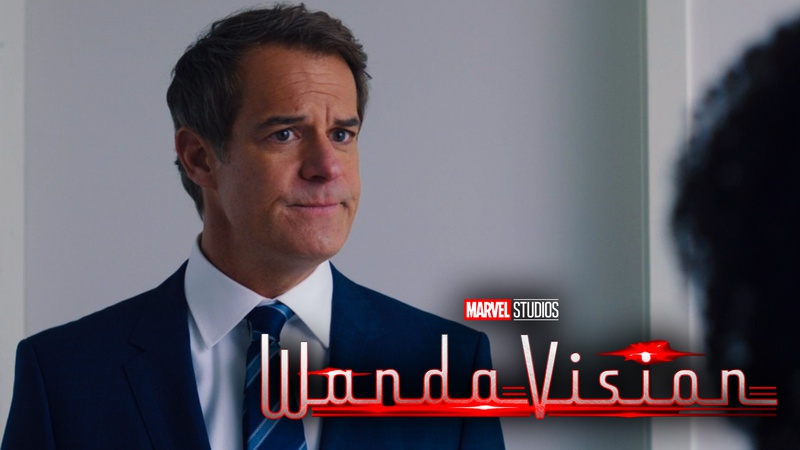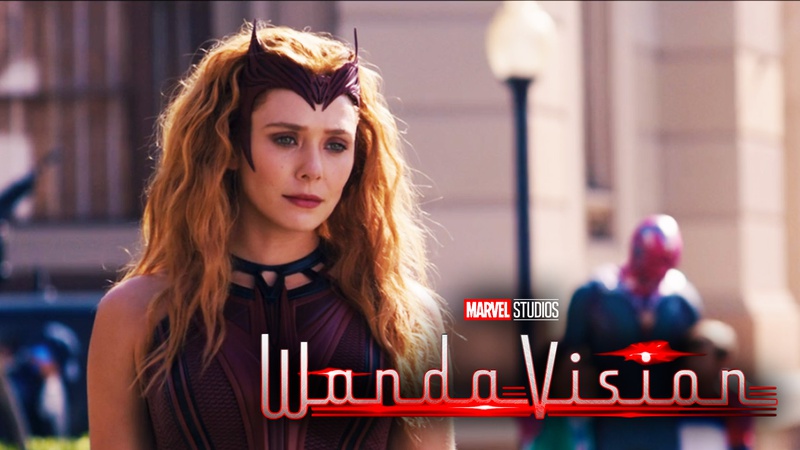
Warning: This article contains spoilers for the season finale of WandaVision.
WandaVision offered a truly unique story for the MCU in which there's a strong debate as to who the main antagonist of the tale actually was. Most Marvel projects have a very traditional black-and-white nature where there are clear heroes and villains for them to defeat. Meanwhile, the intentions of WandaVision 's three key players are morally ambiguous in many ways.
At first glance, it would appear as if Wanda Maximoff is the hero of her series while SWORD director Tyler Hayward and Salem witch Agatha Harkness are the clear antagonists. However, throughout the nine episodes, all three parties show what could be considered villainous agendas in one way or another, so who is the true villain of WandaVision?

AGATHA HARKNESS
Of the three main sides to discuss, Agatha Harkness — formerly Agnes — is the only one with a clear villainous agenda with little argument to be made of any positive intentions in her actions.
Harkness' origins stem back to 1600s Salem where the witch was placed on trial by her own mother. After admitting to her witchcraft, Agatha was attacked by the group of witches. However, she managed to overpower them to free herself and seemingly absorb their powers.
Hundreds of years later, the witch became aware of Wanda's Westview bubble and came to town under the guise of Agnes — a housewife to Ralph Bohner — to infiltrate Wanda's life. Agatha's primary goal became to learn exactly how the bubble town was created, seemingly to understand this power for herself.
Once Harkness finally came to the realization that what Wanda was using was powerful Chaos Magic, she concluded she was the fabled Scarlet Witch — a magic-user even more powerful than the Sorcerer Supreme/Doctor Strange . Through the final battle of the finale, the Salem witch's goal was to absorb Wanda's powers from her, something she failed in doing.
The inclusion of the witch was a well-written way to expand what's known about the workings of magic within the MCU. Before now, Doctor Strange was the only film to delve into the magical side of the superhero world .
However, Agatha clearly added to this lore in a substantial way by offering her expansive knowledge of the Darkhold, Chaos Magic, and some kind of evil Wanda has unintentionally unleashed in her actions .
Agatha Harkness was last seen transformed back into her past guise of Agnes the neighbor in the concluding moments of the series, but it was suggested she may return down the line to offer her help and knowledge of this evil.
Some could make the argument Agatha may have in some way been trying to prevent the release of this threat into the world. Nonetheless, her actions throughout are clearly for her own benefit, and her offer of help was clearly only given out of self-preservation.
All around, Agatha's plot follows a relatively generic villain trope in trying to acquire the powers of the hero to make themselves more powerful. This leaves no contention with the fact she is clearly a villain, but not necessarily the only one...

TYLER HAYWARD & SWORD
Most would overall consider Tyler Hayward and the SWORD agents under his command to be the clear antagonists of the series. Yet, there is a strong argument to be made that the director's decisions are made with the best intentions at heart.
While he does make numerous attempts to kill Wanda, the series' main protagonist, the witch was using her unstoppable power to keep an entire town of people under her control to fuel her perfect world.
Given her actions, it's naturally Hayward's job as the leader of SWORD, an organization that deals with threats to world security, to do everything in his power to rescue those Wanda had under her control.
With regard to Project Cataract and the plan to rebuild the Vision's body as a sentient weapon under SWORD's control, it's clear to say once again Hayward's intentions were in the interest of public safety and the protection of the planet.
As a survivor of Thanos' snap who was working in a government agency to handle extra-terrestrial threats at the time it happened, Hayward would naturally see the need for another layer of security. After all, the Avengers had just failed in their mission to protect the planet and defeat the Mad Titan, and the world would naturally feel the need for some kind of powerful weapon they could use in the event something similar happened again.
However, in the words of the director himself, resurrecting the Vision was a clear violation of both the Sokovia Accords and Vision's own living will as he didn't wish to be brought back to life in any capacity. These actions inevitably led to his arrest in the concluding moments of the series.
It's clear to say Hayward was willing to cross any legal or moral lines necessary to succeed in his goals, making his actions criminal, but not necessarily villainous.

SCARLET WITCH
Putting a superhero through tragedy after tragedy only to see them gradually break down and cause chaos is a concept many would've never believed Marvel Studios and Kevin Feige would ever put to screen.
After losing her parents at a young age, her brother during Avengers: Age of Ultron , and Vision during Avengers: Infinity War , Wanda is undoubtedly broken by the time WandaVision begins. Her character has already been established to be one of the most powerful in the MCU, and the nature of her powers means that a decline in her mental state can cause disastrous consequences.
This isn't the first time Marvel has explored the potential consequences of Maximoff's powers as Captain America: Civil War saw an accident caused by her inspire the introduction of the Sokovia Accords to hold heroes accountable .
After everything Wanda had been through, it seems prior to Thanos' invasion she was preparing to settle down to family life with Vision as the two were living together in Scotland. The synthezoid had even bought a plot of land for the two to one day turn into a house.
The realization of her loss — shown during a flashback scene in "Episode 8" — led Wanda's emotions to overflow, causing her to take over the town of Westview and its citizens by forming a bubble around it that she could control to form her perfect reality. This ended up taking the form of a sitcom-style life as Wanda had idealized the 'perfect life' nature of those series at a young age.
While not intentionally, this led to the citizens of the town being imprisoned with no ability to leave, merely existing to play a role in the perfect world Wanda wanted to live in with the love of her life and the children she created for them.
Even though Wanda's intentions were clearly not intended to be villainous as she admitted herself she didn't realize what she had done initially, she still ended up causing great harm to thousands of people. The brief moments where citizens were released from her control revealed the torture inside their heads and the pain she was unintentionally causing.
Several points in the series make clear the creation and maintenance of the Westview bubble weren't entirely by accident, and Wanda was simply too enthralled in the life she was living to let it go.
Throughout the series, the grief-struck Avenger was seen defending against any attempt to interfere in the life she wanted to live. She banished Monica from the town in the third episode, confronting her again in "Episode 7," and threatened SWORD agents who flew a drone to her home in "Episode 5."
Despite this, Wanda clearly made a reasonable level of effort to ensure good lives for those she controlled as everyone in the town was given good jobs and family lives just like her.
On top of that, it's noted multiple times the children of Westview were kept locked in their rooms at all times except when needed . The decision to shield the children in their rooms to avoid subjecting them to the world she had created was done out of considerate intention but resulted in great distress for the families of them.
All around, Wanda's actions throughout the series didn't have villainous intentions behind them and came as a result of her grieving process, showing the potential danger in her powers. The threat she created in taking over many lives means that the actions of SWORD and Hayward in the series were defiantly justified and reasonable responses to her self-centered actions.
WHO IS WANDAVISION'S VILLAIN?
WandaVision distinguishes itself from other Marvel properties in that the villain is very much up to the interpretation of the viewers. The three major candidates discussed possess drastically different traits.
Agatha showcases objectively evil actions and motives, Hayward has all-around good intentions with flawed execution, while Wanda inadvertently causes harm to great numbers of people with no real intention. Any of the three can be considered antagonists in their own right, which further enriched their interactions throughout the entire season and added a dynamic narrative layer that's been absent in other MCU properties thus far.












